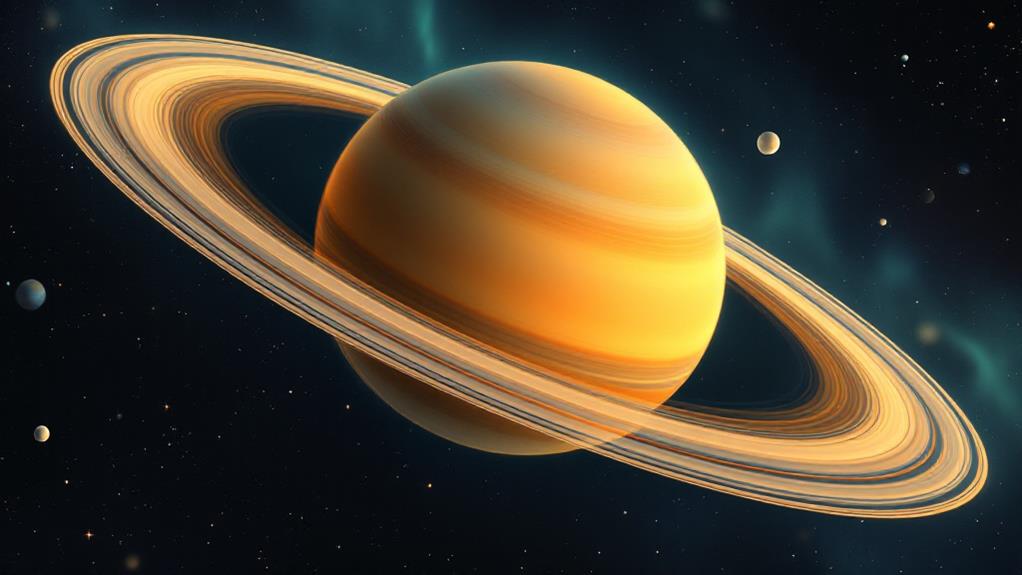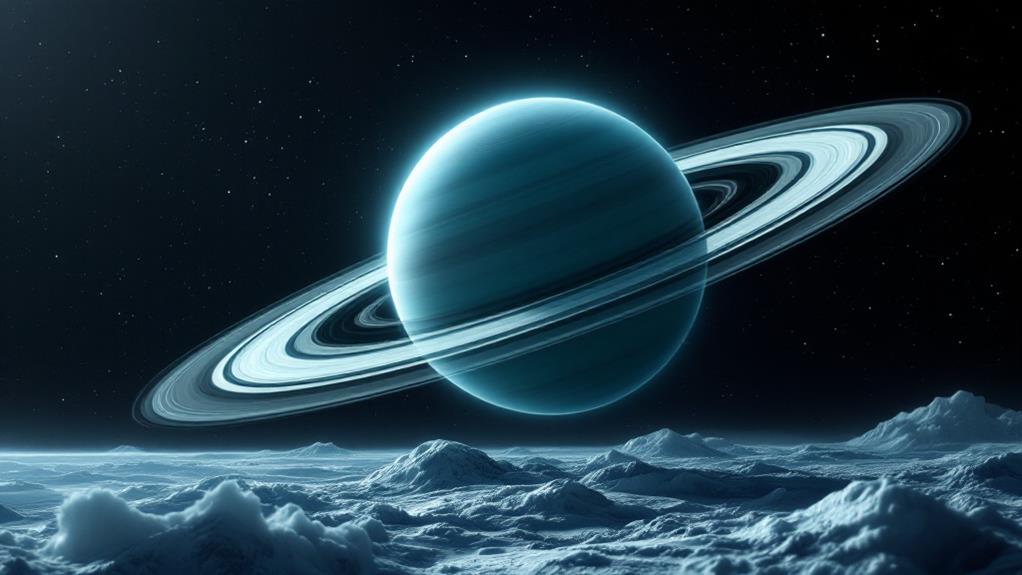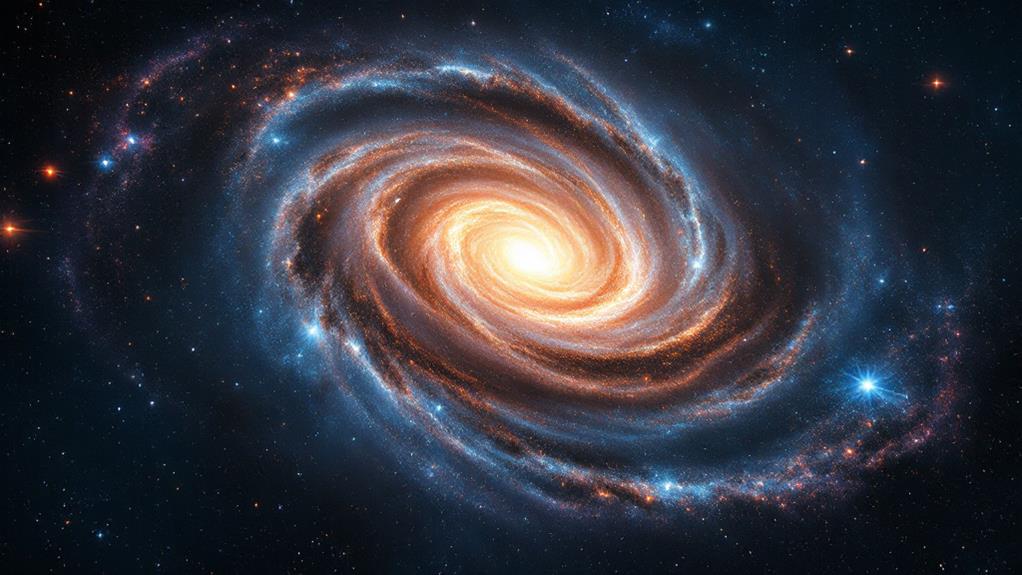Interesting Facts About Pluto: Discovering the Dwarf Planet

You'll uncover that Pluto, found in 1930 by Clyde Tombaugh, sparked interest as "Planet X." Once the ninth planet, Pluto was reclassified as a dwarf planet in 2006 because it doesn't clear its orbit. Its surface is intriguing, with ice mountains and nitrogen glaciers. Pluto's thin atmosphere consists mostly of nitrogen, presenting dynamic seasonal changes. It's orbited by five moons, with Charon as the largest, creating a unique double system. NASA's New Horizons mission revealed this world's complexity, enhancing our knowledge of its geological features and mysteries, which continue to surprise astronomers. There's much more waiting to be investigated.
Pluto's Discovery
In the domain of astronomical findings, Pluto's disclosure in 1930 stands as a significant milestone. You'd find it fascinating to explore the historical context surrounding its revelation. At the beginning of the 20th century, astronomers were on a relentless quest to find a ninth planet, often referred to as "Planet X," due to peculiarities in Neptune's orbit. This search set the stage for Pluto's eventual revelation.
The discovery timeline began to take shape in 1906 when Percival Lowell initiated a systematic search for Planet X. Though Lowell passed away in 1916 without finding the elusive planet, his observatory continued the pursuit. Fast forward to 1929, and a young astronomer named Clyde Tombaugh joined Lowell Observatory. With careful precision, Tombaugh scrutinized photographic plates of the night sky, hoping to spot any celestial body shifting position.
In February 1930, Tombaugh succeeded in spotting a faint, moving object on these plates. This groundbreaking revelation was later confirmed, and the celestial body was named Pluto, marking a crucial moment in astronomy. Pluto's discovery not only expanded your understanding of the solar system but also inspired generations of astronomers and enthusiasts alike.
Reclassification as a Dwarf Planet
Pluto's status as a planet wasn't meant to last forever. In 2006, the International Astronomical Union (IAU) stirred up an astronomical debate when they redefined what constitutes a planet. You might wonder why Pluto got demoted. The IAU introduced specific dwarf planet criteria, which Pluto didn't fully meet. According to this new definition, a celestial body must orbit the Sun, be spherical in shape, and have cleared its orbit of other debris to be considered a planet. Pluto ticks the initial two boxes but falls short on the third.
The reclassification wasn't without controversy. Many astronomers and members of the public expressed their dissatisfaction, arguing that Pluto had been considered the ninth planet for over 75 years. However, the IAU's decision was based on advancing scientific understanding. Pluto shares its orbital neighborhood with other objects in the Kuiper Belt, making it a part of a larger group of similar-sized bodies. By focusing on the dwarf planet criteria, scientists aim to categorize celestial bodies more accurately. Embracing this new classification helps you appreciate the complexity of our solar system and Pluto's unique role within it, even if it's no longer a planet.
Unique Surface Features
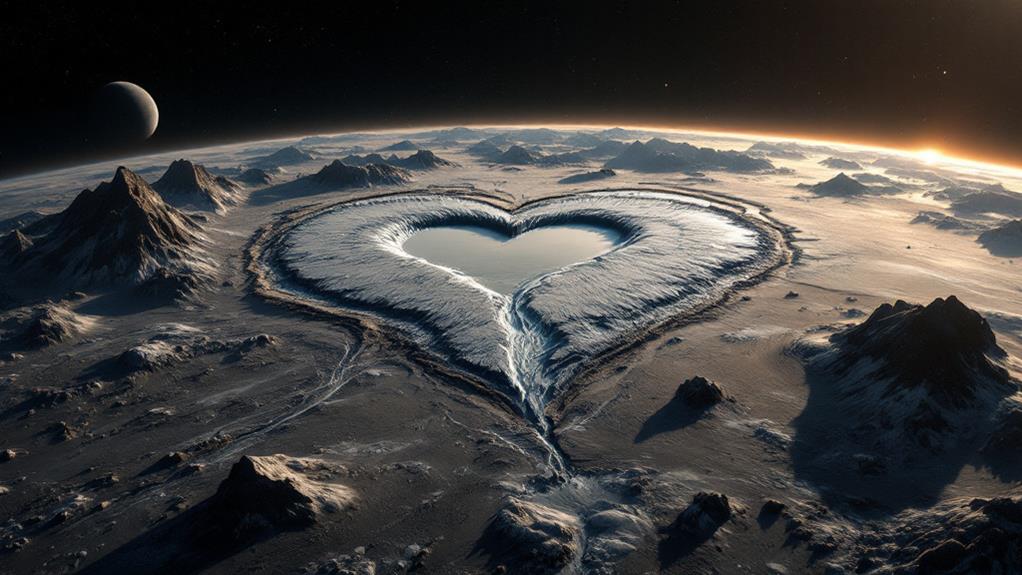
Among the fascinating aspects of Pluto are its unique surface features, which continue to intrigue scientists and enthusiasts alike. You'll find that Pluto's surface is a mosaic of enthralling elements, showcasing an array of geological wonders. One of the standout features is its towering ice mountains, some reaching as high as the Rockies here on Earth. These majestic formations are primarily composed of water ice, reflecting the dwarf planet's diverse surface composition.
Nitrogen glaciers sweep across Pluto's landscape, flowing much like rivers of ice, carving and shaping the surface with their slow, relentless movement. This cryovolcanic activity suggests a geologically active world, with potential subsurface heat driving these processes. The surface isn't static; seasonal changes bring about shifts in Pluto's atmosphere, impacting its appearance.
Impact craters dot the terrain, each telling a story of the solar system's dynamic history. Color variations across Pluto's surface add to its mystique, with hues ranging from pale blues to deep reds. These variations arise from differences in surface materials and duration.
Here's what you might find on Pluto:
- towering ice mountains
- graceful nitrogen glaciers
- dynamic cryovolcanic activity
- intriguing color variations
- ancient impact craters
With these features, Pluto remains a celestial enigma.
Pluto's Atmosphere
Often overlooked in discussions about our solar system, Pluto's atmosphere is a fascinating subject in its own right. You might be surprised to learn that despite its small size and distant location, Pluto's atmosphere is complex and dynamic. The atmospheric composition primarily includes nitrogen, with traces of methane and carbon monoxide. These gases create a thin, hazy atmosphere that extends far above the dwarf planet's icy surface.
What's intriguing about Pluto's atmosphere is how it reacts to seasonal changes. As Pluto orbits the Sun, which takes about 248 Earth years, its distance from the Sun varies greatly. When Pluto is closer to the Sun, its surface ice sublimates, turning into gas, and enhancing the atmosphere. Conversely, when it's farther away, the atmosphere can freeze and fall back to the surface as frost. This cycle of growth and contraction makes Pluto's atmosphere change remarkably over time.
Thanks to missions like NASA's New Horizons, you can now appreciate the intricate details of Pluto's atmosphere. Understanding these changes offers insights into not only Pluto itself but also other distant celestial bodies with similar characteristics. So, next time you think of Pluto, remember its dynamic atmosphere.
Moons of Pluto
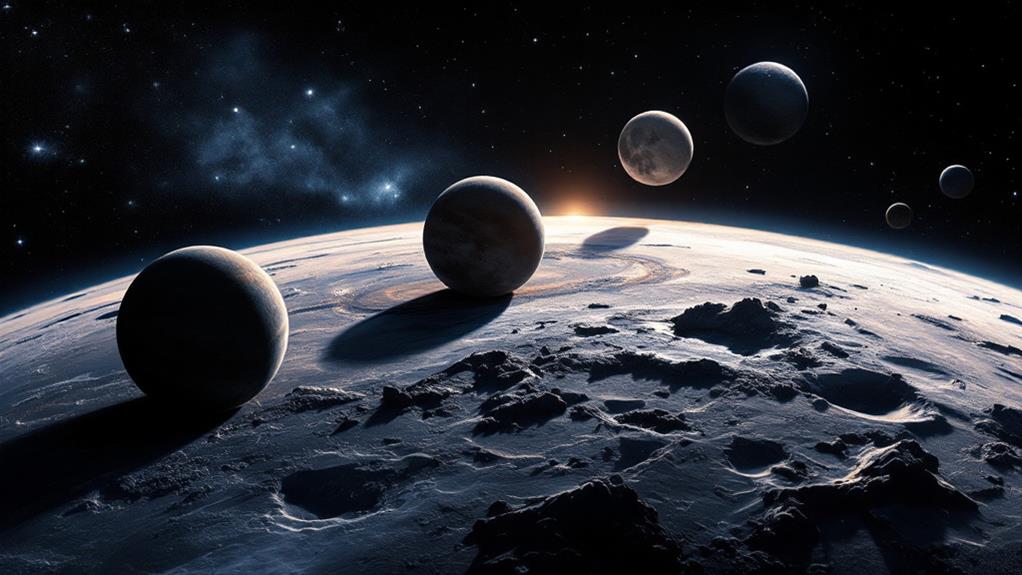
While Pluto's atmosphere enchants with its dynamic changes, its moons provide another layer of fascination. Pluto has five known moons, each contributing to the intriguing dynamics of this dwarf planet's satellite system. The largest and most notable is Charon, which is so massive compared to Pluto that they are sometimes considered a double dwarf planet system. Charon dynamics are especially enthralling due to the gravitational interactions between the two bodies, causing both to face each other with the same side constantly.
You might find it interesting how these moons interact with one another, creating a complex satellite system. Here's what you should know:
- Charon: The largest moon, influencing Pluto's rotation and orbit.
- Nix and Hydra: Found together, these moons add to the complexity of Pluto's satellite interactions.
- Kerberos: Smaller and darker, it adds mystery to the system.
- Styx: The smallest, it further complicates the gravitational dance.
These moons don't just orbit Pluto; they engage in a delicate cosmic ballet, with Charon's gravitational pull greatly impacting their orbits. This intricate interaction showcases the wonders of celestial mechanics, inviting you to explore deeper into the mysteries of Pluto's moons.
The New Horizons Mission
The New Horizons mission offers an unprecedented glimpse into the outer reaches of our solar system, particularly Pluto and its moons. Launched by NASA in 2006, this ambitious mission aimed to conduct a close-up study of Pluto, marking a significant milestone in Pluto exploration. You might find it fascinating that New Horizons traveled over three billion miles to reach its target, capturing detailed images and data that reshaped our understanding of this distant world.
As the spacecraft zipped past Pluto in July 2015, its mission findings astounded scientists. You could see the diverse terrain revealed by New Horizons, from vast plains to icy mountain ranges. The mission revealed Pluto's complex atmosphere and uncovered astonishing features like the heart-shaped glacier, Sputnik Planitia. You'd be amazed at the revelations about Pluto's moons, particularly Charon, which showcased dramatic canyons and intriguing surface features.
New Horizons didn't stop at Pluto; it continued its expedition into the Kuiper Belt, providing valuable insights into the distant fringes of our solar system. Through this mission, you gain a deeper appreciation for the wonders of Pluto exploration and the groundbreaking revelations that continue to unfold.
Ongoing Mysteries

After New Horizons' groundbreaking expedition, Pluto still holds many secrets waiting to be unraveled. One of the most intriguing aspects is Pluto's geology. The dwarf planet's surface features are diverse and dynamic, hinting at geological processes unlike any other in our solar system. You've got icy mountains, vast plains, and strange polygonal patterns formed by unknown activities. These features challenge scientists to rethink what they know about geological activity in such a frigid environment.
When pondering the potential for life, Pluto raises even more questions. Could some form of life exist in the subsurface oceans thought to be beneath its icy crust? This remains speculative, but it's a thrilling possibility that continues to capture imaginations. Consider these ongoing mysteries:
- The nature of Pluto's internal heat source, which might drive geological activity.
- The composition and behavior of its thin atmosphere.
- The unexplained reddish patches on the surface.
- The mysterious changes in Pluto's ice plains, like Sputnik Planitia.
- The potential for cryovolcanism and its implications.
These unsolved puzzles make Pluto a compelling target for future exploration. As technology advances, you'll likely hear more about this enigmatic world and its hidden wonders.
